Aron Brown
Hello! I am a student at the University of British Columbia doing my bachelors degree in education. My background is in history, with a focus on colonial Canadian, and early 20th century history.
Playlists
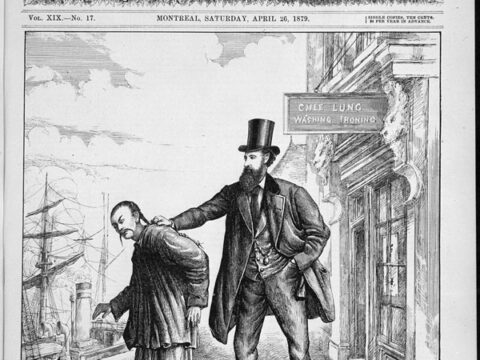
Chinese Canadians in pre and interwar British Columbia
By Aron Brown
Images and text shed light on Chinese narratives of the late 19th century in British Columbia up till the Chinese Immigration Act of 1923. Through analyzing these sources we aim to recognize the historical context in which these events and prejudices took place, and begin an informed conversation on how they affect the present.
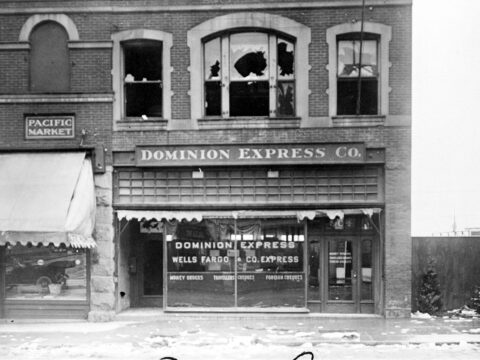
Complicating The Home Front
By Aron Brown
Visual and textual resources help bring to light the experiences of German Canadians in British Columbia during the Great War. Violence and Discrimination played off of major world events and propaganda, as people of German ancestry within British Columbia faced prejudice for events that took place a world away.
Entries

1In 1 playlists
By Aron Brown
Stephen Harper acknowledges the discrimination against Chinese Canadians by the Canadian government regarding the Chinese Head Tax, and the Chinese Exclusion Act.

2In 2 playlists
By Aron Brown
This document gives a comprehensive report on the historical wrongs against Chinese Canadians, the apology given by Stephen Harper in 2006 for the Chinese Head Tax, and Chinese Exclusion Act, and recommendations for reparations.

By Aron Brown
In June 2006 Prime Minister Harper apologized to Chinese Canadians for their treatment regarding the Chinese Head Tax, and the Chinese Exclusion Act of 1923. The survivors of the head tax or their spouses were paid roughly 20,000 dollars in compensation.
Article taken from the Prime Minister of Canada Stephen Harper website.
Article taken from the Prime Minister of Canada Stephen Harper website.

By Aron Brown
Bill C-331 passed in 2005 acknowledges the internment of peoples of Ukrainian origin during WW1 under the authority of Parliament. The enactment represents negotiations between Ukrainian-Canadian organisations and the Government to enact measures that recognize the internment of Ukrainian peoples during WW1.

1In 1 playlists
By Aron Brown
Addressed to Nykolay Andrusiak, a subject of Austria, is a certificate of release from an internment camp at Vernon, B.C. As we can see in the conditions of discharge, Nykolay's conditions reflect many of the sections of the War Measures Act of 1914.
Taken from Library and Archives Canada. MIKAN no. 1604479
Taken from Library and Archives Canada. MIKAN no. 1604479
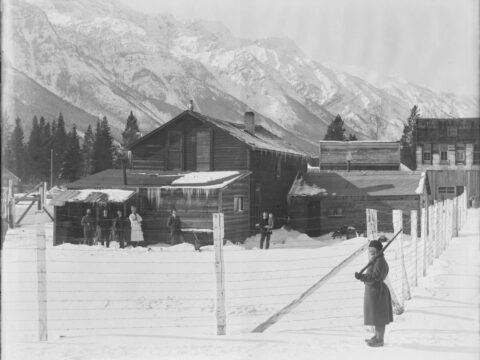
1In 1 playlists
By Aron Brown
Internment camp at Morrissey B.C. during WW1 for Germanic and Austro-Hungarian people. How does this image contrast the other two images of internment camps in Vernon? What might you be able to tell about living conditions from the photo?

1In 1 playlists
By Aron Brown
Men, Women, and children were interned at many of these camps during WW1. Here we have an image of two children at an internment camp in Vernon, B.C. On the photograph is written "Some happy camp children." Who might be taking the photo? Could the photo be staged?
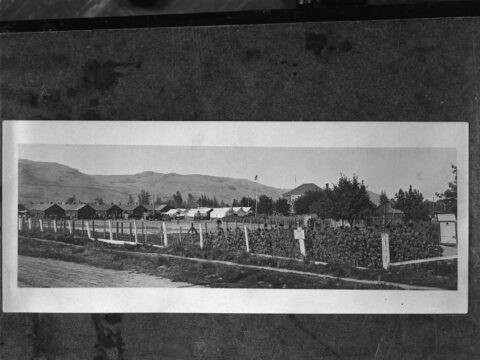
1In 1 playlists
By Aron Brown
In the image we see a profile of an internment camp in Vernon, B.C. during WW1 for Germanic and Austro-Hungarian prisoners of war. These camps were set up as a way of dealing with "enemy aliens" who were thought as posing a danger to Canada through espionage and sabotage.
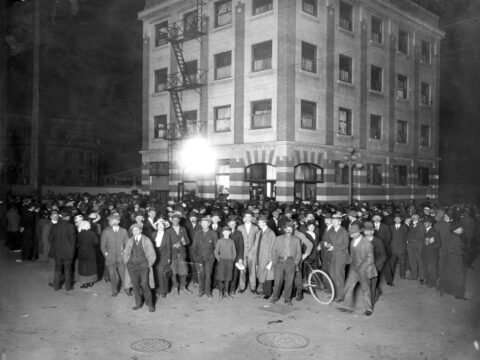
1In 1 playlists
By Aron Brown
This photo captures a large subset of demonstrators who engaged in the anti-German riots on German owned businesses following the sinking of the SS Lusitania. The demonstrators are pictured outside the Kaiserhof Hotel on May 8th, 1915.
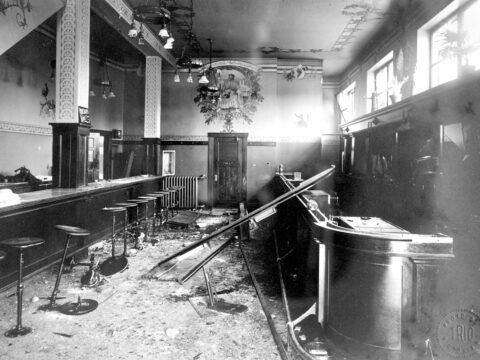
By Aron Brown
The Kaiserhof hotel in Victoria was damaged by anti-German rioters after the sinking of the SS Lusitania. This demonstration took place May 8th 1915.

1In 1 playlists
By Aron Brown
A Royal commission was initiated to investigate into the losses of the Chinese population of Vancouver from the anti-Asian riots of 1907. The document discusses the losses sustained, details of the investigation, and the amounts allowed for individual losses.

2In 2 playlists
By Aron Brown
V. Kawasaki Bros store on 202 Westminster Ave. Vancouver. The store received damage from the Asiatic Exclusion League during the Anti-Asian riot of 1907. What was the intended purpose of the damage?
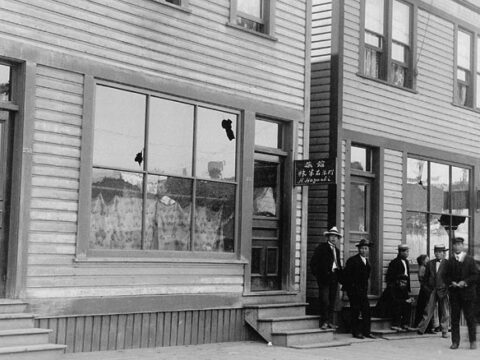
1In 1 playlists
By Aron Brown
Damage to the boarding houses of T. Kato and H. Hayashi on Powell st. Vancouver. The damage was caused by the Asiatic Exclusion League during the Anti-Asian riot of 1907.

1In 1 playlists
By Aron Brown
A petition drawn up by Chinese residents of Victoria, BC asking for an amendment to the Chinese Immigrant Act. What changes are they proposing? What would this amendment do? Who would it affect? Why might these residents be asking for this amendment?
Taken from Library and Archives Canada. MIKAN no. 1600681
Taken from Library and Archives Canada. MIKAN no. 1600681

2In 2 playlists
By Aron Brown
With the creation of the Chinese Immigration Act of 1885 a head tax of 50 dollars was placed on all Chinese immigrants coming to Canada. The head tax was subsequently raised in 1900 and again in 1903 to the cost of 500 dollars.

2In 2 playlists
By Aron Brown
The caption reads "A Heathen Chinese in British Columbia." This is a cartoon from the Canadian Illustrated News, 1879. How is the white male depicted compared to the Chinese male? What might their faces tell us about their character? What is the significance of the sign in the top right corner? What might this cartoon tell us about the author?

By Aron Brown
Along with the German consulate, the German club above the Dominion Express office was vandalized after the sinking of the SS Lusitania by a German U-Boat. The SS Lusitania had a high proportion of British and Canadian passengers when it sank, and was carrying war munitions on board as well.
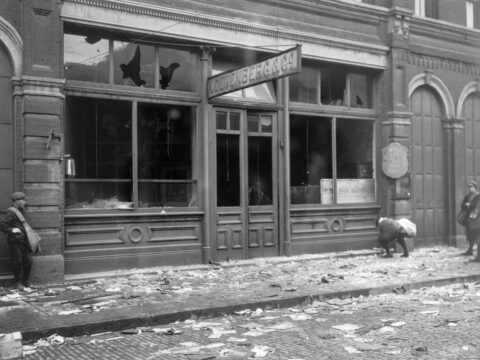
1In 1 playlists
By Aron Brown
Damage to the German consulate in Victoria after the sinking of the SS Lusitania. The RMS Lusitania was a British ocean liner which was sunk 18 kilometers off the south coast of Ireland by a German U-Boat.

1In 1 playlists
By Aron Brown
Enacted in August 1914, the War Measures Act allowed the Canadian government to suspend and restrain civil autonomy to those who were perceived a threat during times of war. This included "enemy aliens," many of which were of German and Ukrainian ancestry.
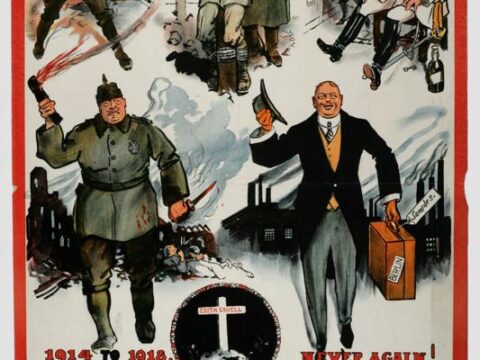
1In 1 playlists
By Aron Brown
"Once a German - Always a German!" An anti German propaganda poster created by the United Kingdom in January of 1918. The poster draws upon anti German sentiment, and wartime German stereotypes to encourage citizens not to buy German goods or hire German workers.
The poster was taken from the "Canadian Museum of History." Source
The poster was taken from the "Canadian Museum of History." Source

